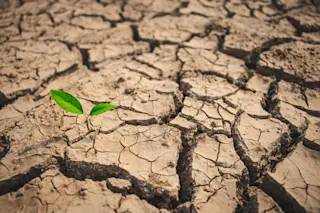You’ve heard of flash floods, but have you heard of flash droughts? These events are relatively new for natural disasters, and come on fast, with conditions going from normal to severely dry in less than one month. This means people have no time to prepare for the consequences, which can include withered crops, dried streams or depleted wells.
There’s been an effort over the past six years to better understand flash droughts, according to Ben Cook, a climate scientist at the NASA Goddard Institute for Space Studies. One goal is to pinpoint early indicators that might help forecast these events and give more warning before they hit.
“The classic view of droughts is that they are slow moving and take a long time to develop,” says Cook. “But like heavy rainfall or floods or heat waves, flash droughts are very quick — all of a sudden, you're in it.”
A ...















